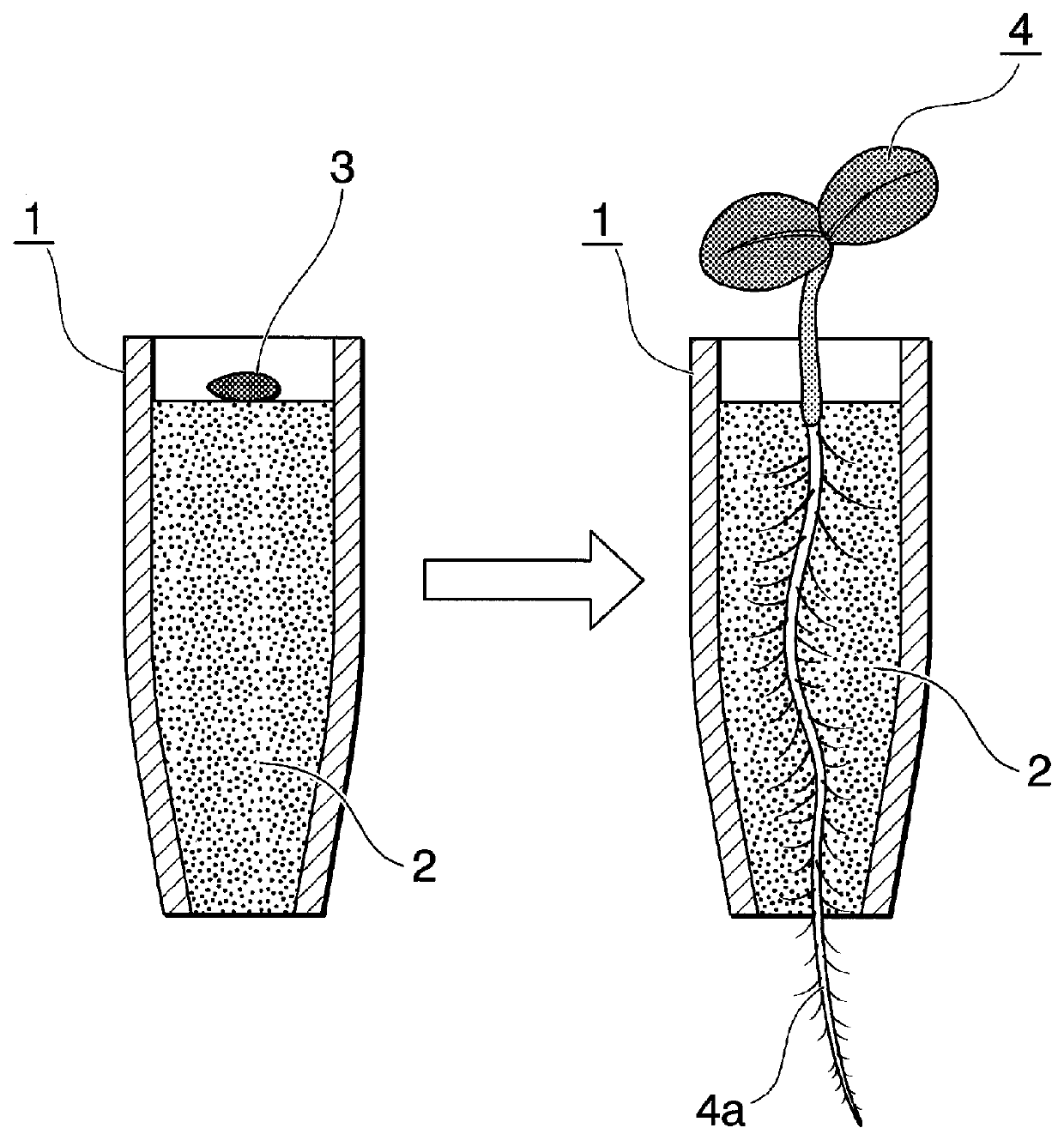Method for selecting plant symbiotic microbes, and microbial mixture
a plant symbiotic and microorganism technology, applied in the field of plant symbiotic microorganisms and microbial mixtures, can solve the problems that the benefits of microorganisms cannot be investigated, and achieve the effect of improving the viability of the plant and improving the salt tolerance or hyperosmotic stress of the plan
- Summary
- Abstract
- Description
- Claims
- Application Information
AI Technical Summary
Benefits of technology
Problems solved by technology
Method used
Image
Examples
reference example 1
[0082]The salinity stress tolerance of Arabidopsis thaliana was examined.
[0083]A sucrose-containing MS agar medium (medium prepared by adding 0.5% (w / v) sucrose and 0.9% (w / v) agar to a MS medium) was injected into a cylindrical pot with open top and bottom, and the agar medium was solidified to prepare a pot for growing a plant. A plurality of the thus prepared pots were placed in each of eight containers containing a sucrose-containing MS medium (liquid medium prepared by adding 0.5% (w / v) sucrose to a MS medium).
[0084]Arabidopsis thaliana seeds (Col-0) were purchased from LEHLE (Round Rock, Tex., USA). The seeds were stirred for 1 minute while being immersed in 1% hypochlorous acid solution to thereby sterilize the surfaces of the seeds, followed by removal of hypochlorous acid by centrifugation. After the hypochlorous acid treatment, the seeds were rinsed three times with sterilized water, sown on the top of the pot, and stored in a dark place at 4° C. for 24 hours.
[0085]Each of...
example 1
[0088]Using Arabidopsis thaliana, a group of plant symbiotic bacteria having a symbiotic effect to increase salt tolerance was selected from microorganisms extracted from the soil.
[0089]1 g of soil collected in Coyote Ridge (Fort Collins, Colo., USA) was suspended in a buffer solution, and the resulting was thoroughly stirred to obtain a microbial suspension.
[0090]As in Reference Example 1, a plurality of the above pots were prepared and all of them were placed in one container containing a sucrose-containing MS medium (liquid medium prepared by adding 0.5% (w / v) sucrose to a MS medium). Each pot was installed such that the bottom surface thereof was soaked in the sucrose-containing MS medium while the top surface thereof was not soaked. On the top of these pots, the seeds were sown and grown at 25° C. for 14 days in an incubator under long day conditions with 16 hours of light and 8 hours of darkness.
[0091]14 days after initiating the hydroponic cultivation, a sterilized 5 M sodium...
example 2
[0101]The microorganisms forming the group of plant symbiotic bacteria (microbial mixture) selected in Example 1 that enable plant growth under salinity stress were identified. Specifically, genomic DNA is recovered from the selected group of plant symbiotic bacteria (microbial mixture) that enables plant growth under salinity stress, and 16S rDNA was identified, thereby identifying microorganisms constituting the group of plant symbiotic bacteria.
[0102]In the same manner as in the above , the roots were recovered from the plants grown under salinity stress with a salt concentration of 3.0% by mass and homogenized to prepare a microbial collection solution. Bacterial cells were recovered from the microbial collection solution, and a genomic DNA was obtained from a part of the recovered cells using a GenElute Bacterial Genomic DNA kit (Sigma-Aldrich, St. Louis, Mo., USA).
[0103]Using the recovered genomic DNA as a template, 16S rDNA was amplified by PCR using a forward primer (5′-AGAG...
PUM
| Property | Measurement | Unit |
|---|---|---|
| pH | aaaaa | aaaaa |
| temperature | aaaaa | aaaaa |
| abiotic stress | aaaaa | aaaaa |
Abstract
Description
Claims
Application Information
 Login to View More
Login to View More - R&D
- Intellectual Property
- Life Sciences
- Materials
- Tech Scout
- Unparalleled Data Quality
- Higher Quality Content
- 60% Fewer Hallucinations
Browse by: Latest US Patents, China's latest patents, Technical Efficacy Thesaurus, Application Domain, Technology Topic, Popular Technical Reports.
© 2025 PatSnap. All rights reserved.Legal|Privacy policy|Modern Slavery Act Transparency Statement|Sitemap|About US| Contact US: help@patsnap.com

